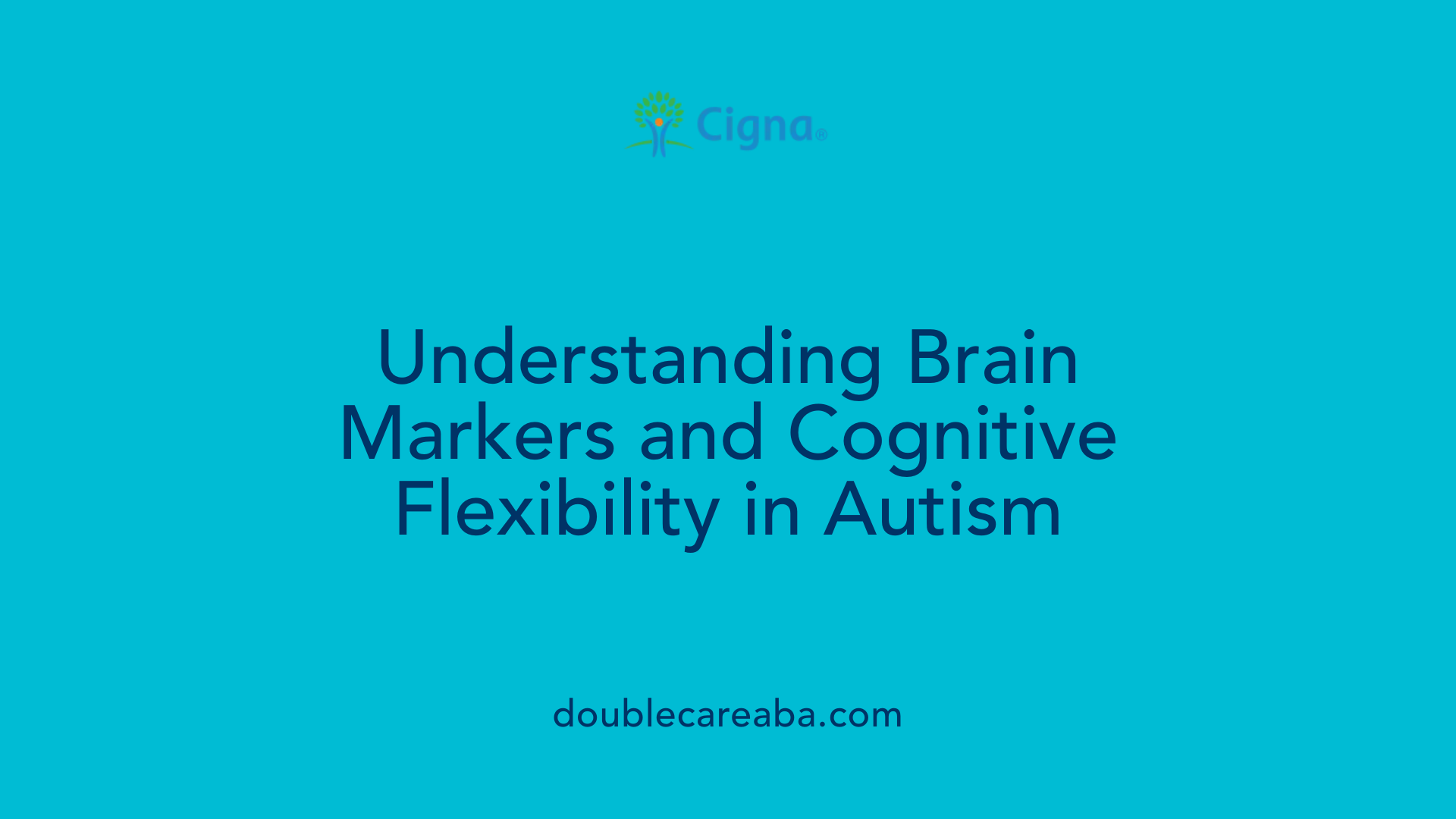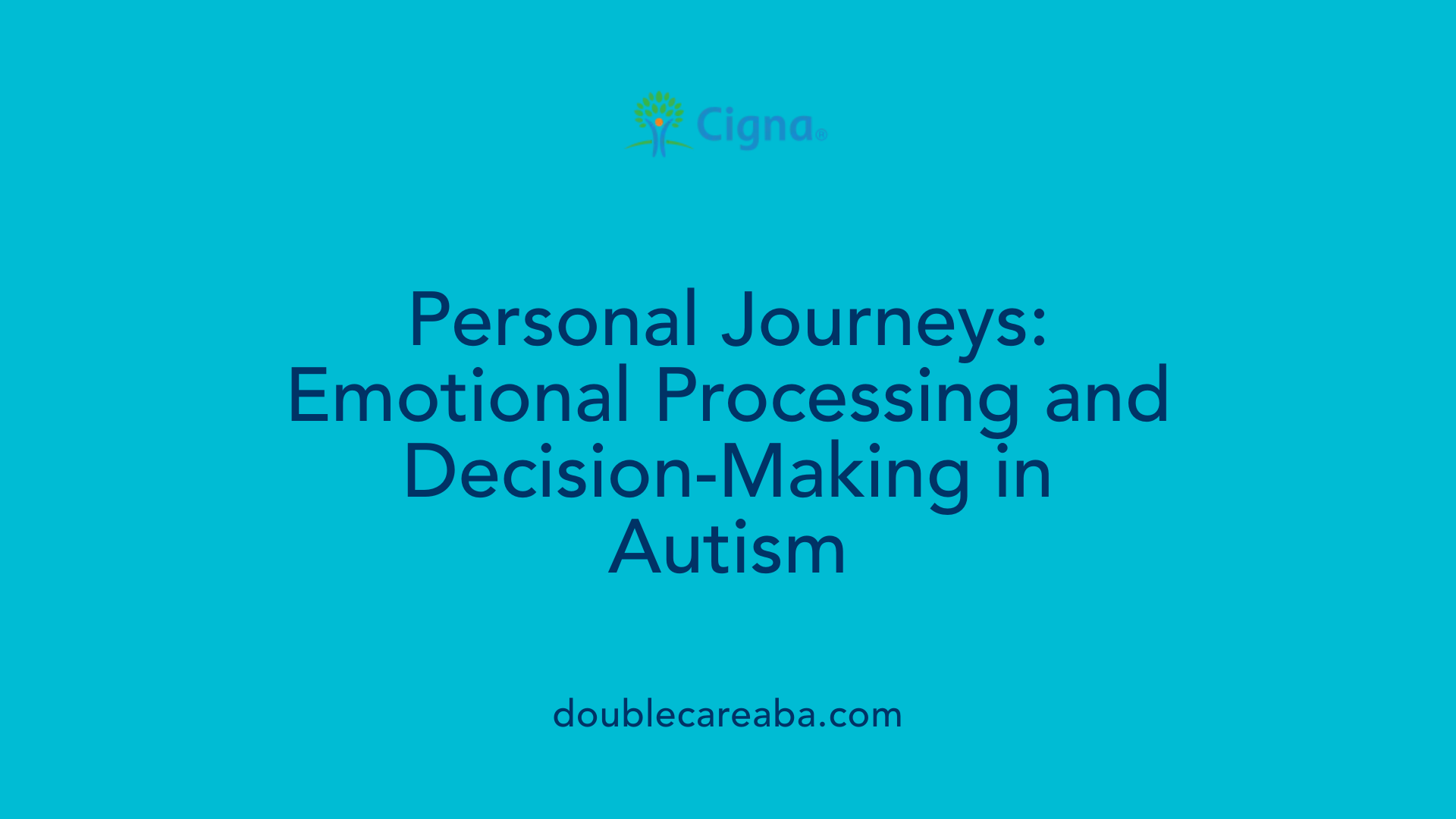Exploring Autism and Logical Thinking: Myths, Strengths, and Scientific Insights
The question of whether autistic individuals excel in logical reasoning has long intrigued researchers, educators, and society at large. While stereotypes sometimes depict autistics as either purely logical or entirely emotional, scientific evidence paints a more nuanced picture. This article delves into the cognitive styles of autistic individuals, examining research findings, cognitive strengths, and the diversity of reasoning approaches within the spectrum. By understanding these aspects, we can better appreciate the unique ways autistic minds process information, solve problems, and make decisions.
Diverse Cognitive Styles in Autism and Their Relation to Logic

What is known about autistic thinking and how it relates to logical reasoning and cognitive strengths?
Autistic individuals often exhibit a variety of thinking styles that influence their approach to reasoning and problem-solving. These styles include visual thinking, verbal or logical reasoning, and pattern recognition. Many autistic people show a strong focus on details, which supports their exceptional memory and ability to recognize complex relationships quickly.
Visual thinkers, for example, process information in pictures, often visualizing mental images or seeing things physically. This mode of thinking enables them to excel in visual tasks and creative problem-solving. Verbal or logical thinkers tend to be articulate with language and excel in areas like literature, facts, and systematic reasoning. Pattern thinkers focus heavily on recognizing repetitions and relationships in math, music, or natural phenomena.
These diverse cognitive strengths are closely linked to traits like heightened attention to detail, persistent curiosity, and associative thinking. Such traits foster creativity, as they enable individuals to connect ideas in unique ways and develop innovative solutions. Many autistic individuals demonstrate superior problem-solving skills, often outperforming neurotypical peers in puzzles or logical tasks.
While social cognition or executive functioning may pose challenges for some, their strengths in logical consistency, pattern recognition, and detail-oriented thinking contribute significantly to their cognitive profile. Overall, these traits form a constellation of strengths that support complex reasoning and learning, highlighting the potential to leverage these skills in education and daily life.
Research Findings on Autism and Logical Abilities
What do studies reveal about reasoning processes in autism?
Research shows that autistic individuals often demonstrate distinctive reasoning styles compared to neurotypical individuals. They tend to excel in pattern recognition, systematic analysis, and detailed thinking, which can translate into superior problem-solving skills, especially in fields that require attention to detail and logical rigor.
How do deliberative and intuitive processing differ in autistic individuals?
Autistic individuals generally exhibit greater deliberative (slower, more thoughtful) processing alongside reduced intuitive (faster, automatic) responses. In experiments like the Cognitive Reflection Test (CRT), they produce more deliberate answers and fewer intuitive responses than control groups.
What does research using the CRT tell us about cognitive reflection in autism?
The CRT results suggest that autistic individuals are more inclined toward reflective, analytical thinking, especially when given time to process information. Both autistic and neurotypical groups show increased intuitive responses when responses need to be quick, highlighting that reasoning style in autism is sensitive to time constraints.
How does the dual process theory relate to autism?
The Dual Process Theory posits two modes of thinking: a fast, intuitive system and a slower, deliberative system. Studies support this in autism, indicating that autistic people depend more on deliberative processing and less on intuition. This suggests a cognitive style that favors logical analysis over snap judgments.
Are autistic individuals inherently less intuitive?
While their intuitive processing is reduced, it remains intact and can be influenced by time and context. When encouraged or given enough time, autistic individuals can engage their intuition more freely, showing that intuitive reasoning isn’t absent but often less dominant.
How do different thinking styles manifest in autism, according to Temple Grandin?
Autistic thinkers often fall into categories like visual, verbal/logic, or pattern thinkers. Visual thinkers process in pictures and may have photographic memories, while verbal/logic thinkers excel in language and facts. Pattern thinkers recognize relationships in complex systems, contributing to their problem-solving skills.
How does associative thinking aid autistic reasoning?
Autistic individuals often excel in bottom-up, associative thinking, where they build concepts from details. This web-like linking of ideas fosters creativity and scientific insight, allowing them to make unusual connections and solve problems efficiently.
What are some social reasoning implications?
Despite strong logical skills, autistic individuals might struggle with the social aspects of reasoning, such as moral judgment. High-functioning adults, for example, often pass false belief tests indicating understanding of others' thoughts, yet they may find moral judgments harder due to emotional or social reasoning complexities.
Summarizing reasoning strengths and differences
Overall, autistic individuals tend to prefer analytical, rule-based reasoning and are less influenced by emotional biases. Their strengths in pattern recognition, logical problem-solving, and detailed analysis often lead to impressive achievements in various domains. However, social cognition and emotional processing may pose challenges, illustrating the diverse reasoning landscape across autism.
Cognitive Processing Styles in Autism: Deliberative and Intuitive Dynamics
How do processing speeds differ between autistic and neurotypical individuals?
Autistic individuals generally show a tendency toward slower, more deliberative processing. This means they often take more time to analyze information thoroughly before responding. Conversely, they tend to have faster responses when engaging in intuitive processing, which relies on instinctive or automatic judgments.
How does time influence reasoning in autism?
Research indicates that both autistic and control groups respond differently depending on the timing of the task. When given a short, rapid response condition, autistic individuals lean more on their intuitive, automatic responses, which are quicker but less deliberate. In contrast, under slower, more time-pressured conditions, they demonstrate increased deliberative reasoning, producing more reflective responses. This sensitivity to timing shows that reasoning styles in autism adaptable and influenced by environmental cues.
What does this mean for the dual process theory in autism?
The findings support the Dual Process Theory as it applies to autism. This theory suggests two modes of reasoning: a fast, intuitive system and a slower, deliberative system. Autistic people tend to favor the deliberative side, engaging in deeper, more methodical thinking, and show reduced reliance on the intuitive, quick judgments common among neurotypicals. Importantly, their capacity for intuitive processing remains intact and can be activated with suitable prompts or time constraints, highlighting a flexible, context-dependent reasoning style.
Are there different thinking styles among autistic individuals?
Yes, autistic individuals often exhibit varied cognitive preferences. According to Temple Grandin, thinking styles can include visual thinking—thinking in pictures and associating information visually; verbal or logical thinking—focused on language, rules, and factual memorization; and pattern-focused thinking—recognizing and analyzing patterns in abstract systems like math or music.
How do strengths in associative thinking and logic manifest?
Autistic individuals usually excel in bottom-up, associative thinking, where they gather details and connect ideas in a web-like pattern. This can lead to creative insights, unusual word associations, and innovative scientific ideas. Many also reason logically and consistently, which can shield them from cognitive biases such as framing effects that often influence decision-making.
| Thinking Style | Typical Strengths | Examples |
|---|---|---|
| Visual | Picture thinking, photographic memory | Processing images, reconstructing scenes |
| Verbal/Logic | Language, facts, rules | Memorizing data, analyzing complex language |
| Pattern | Recognizing relationships | Finding connections in math, music |
How do these thinking styles affect decision-making?
Autistic decision-making tends to be less swayed by emotional biases. They often rely on rational, numerical information over emotional cues, which can be advantageous in contexts requiring objective judgment. Moreover, their reduced susceptibility to cognitive biases like the framing effect highlights the value of their logical reasoning approach.
What insights does this provide about supporting autistic thinking?
Recognizing the diversity in cognitive processing styles emphasizes the importance of personalized education and communication strategies. For example, teaching methods that leverage visual thinking or logical problem-solving can enhance learning experiences. Also, understanding that some autistic individuals prefer logical reasoning without emotional interference can guide better social and emotional support.
In conclusion, autistic individuals exhibit a blend of deliberative and intuitive processing that is sensitive to environmental cues like time constraints. Their strengths in logical, pattern, and visual thinking enable remarkable problem-solving and creativity, underscoring the value of embracing cognitive diversity.
Neurophysiological Biomarkers and Cognitive Flexibility in Autism

What scientific explanations or research findings about autism and logical reasoning?
Research into autism reveals distinct cognitive processing patterns that influence how autistic individuals think and make decisions. Many studies highlight that those on the spectrum often excel in pattern recognition and problem solving, demonstrating strengths in bottom-up, associative thinking. They tend to process information in a very logical and literal manner, which can improve their accuracy and consistency in reasoning tasks.
However, their conceptual reasoning—ability to understand abstract or complex ideas—may be comparatively weaker. This difference is supported by findings from cognitive tests like the Cognitive Reflection Test (CRT), where autistic participants tend to produce more deliberative (slower) responses and fewer intuitive (faster) ones than neurotypical controls.
Experimental evidence also shows that autistic individuals’ reasoning style is flexible depending on time constraints. When given more time, they engage in more thoughtful, logical processing; under pressure, they may rely more on intuition. This indicates that their rational processes are intact and can be activated with proper cues.
Neurophysiological markers, including EEG responses such as N170 latency—a brain activity pattern associated with facial recognition—are being utilized to objectively measure autism. These biomarkers help move beyond purely behavioral assessments, providing insight into the neural underpinnings of their cognitive styles.
Furthermore, decision-making research suggests that autistic individuals tend to avoid emotional biases. They often make decisions based on numerical or factual information, showing less susceptibility to common cognitive biases like the framing effect. This rational approach can be advantageous in scenarios that require logical rather than emotional judgment.
In summary, scientific studies highlight that while autistic individuals may face challenges in certain areas of reasoning, their cognitive abilities to process logical information are strong and adaptable. Advances in neurophysiological research continue to enhance understanding and support the development of tailored interventions to improve reasoning and decision-making skills.
Stereotypes and Cognitive Diversity within Autism
What are common stereotypes and the diversity of thinking styles among autistic individuals?
Many stereotypes portray autistic people as having a uniform way of thinking—either extremely detail-focused or lacking social skills. These Simplifications ignore the incredible variety in cognitive styles across the autism spectrum.
Autistic individuals often have strengths in logical reasoning, pattern recognition, and visual thinking. Some excel at visual and verbal/logic tasks, showing abilities like photographic memory or rapid problem-solving. Others may be very literal in understanding language, which can lead to social communication challenges. For example, literal thinkers interpret idioms and sarcasm in their exact, concrete sense.
At the same time, many autistic people demonstrate differences in their reasoning processes. They tend to employ more deliberative (slow) processing and less intuitive (fast) responses, especially under time constraints. Studies using the Cognitive Reflection Test (CRT) reveal that autistic individuals generally produce more reflective answers, emphasizing logical steps over gut feelings.
Autonomy in thinking allows autistic individuals to rely heavily on their detailed, associative methods, making unique connections that might seem unconventional but are often innovative. This diversity in cognitive style means that some may think more logically and systematically, while others think visually or pattern-based, highlighting the broad spectrum of neurodiverse thinking.
Understanding this variety fosters appreciation for the natural differences among autistic individuals. Supporting personalized approaches and flexible environments helps leverage their strengths and address challenges, promoting greater inclusion and understanding of neurodiversity.
Development of Logical Thinking: Educational Strategies and Interventions
What educational strategies can support the development of logical thinking in autistic children?
Supporting the growth of logical thinking in autistic children involves a combination of thoughtful teaching methods and supportive environments. Structured, consistent strategies are fundamental, providing predictability that helps reduce anxiety and build confidence. Visual supports, such as pictures, diagrams, and schedules, serve as effective tools to make abstract ideas more concrete, aiding children in understanding cause-and-effect relationships.
Concrete examples are essential for making learning meaningful. Activities that involve manipulation of objects or real-world scenarios—like cooking, storytelling, or science experiments—help children see connections and apply reasoning skills in everyday contexts. These hands-on experiences can enhance their understanding of how concepts work in reality.
Creating a structured environment that minimizes sensory overload and distractions encourages focus and engagement. Predictability in routines, combined with clear instructions, supports children's natural curiosity and logical development.
Encouraging questioning and detailed observation fosters critical thinking. For example, prompting children to compare objects or identify patterns nurtures their reasoning abilities.
Incorporating real-world activities not only solidifies learning but also helps children generalize skills beyond the classroom. By connecting lessons to everyday life, children can develop a more flexible, logical approach to problem-solving.
| Teaching Strategy | Description | Benefits |
|---|---|---|
| Visual Supports | Use of pictures, diagrams, schedules to represent concepts | Enhances understanding, reduces confusion |
| Concrete Teaching Methods | Practical activities like cooking or experiments to illustrate ideas | Promotes experiential learning and reasoning |
| Structured Environments | Predictable routines, clear instructions, sensory-friendly settings | Increases focus, reduces anxiety |
| Real-world Activities | Incorporation of everyday tasks to apply logical skills | Generalizes learning, boosts confidence |
How does a structured approach help in developing logical thinking?
A structured approach offers clarity and predictability, reducing uncertainties that can overwhelm and distract autistic children. This environment allows for better focus on learning tasks, making complex concepts more accessible. By systematically introducing concepts through visual aids and hands-on activities, educators help children form logical connections and develop reasoning skills effectively.
The Role of Literal Thinking and Its Impact on Communication

What are common stereotypes and the diversity of thinking styles among autistic individuals?
Autistic individuals often face stereotypes that suggest they think in the same way—primarily focusing on details and lacking social understanding. However, cognitive styles among autistic people are actually very diverse.
Many autistic individuals are highly logical thinkers, with strengths in pattern recognition, visual thinking, and memorization. For example, some, like Temple Grandin, describe themselves as visual thinkers who process information associatively through pictures rather than words.
Others excel in verbal and logical reasoning, enjoying language, literature, or facts about history and sports. There are also pattern thinkers who recognize relationships within music, math, or natural systems.
However, many autistic people have difficulties with abstract reasoning and central coherence — the ability to see the big picture — which makes adapting to certain environments challenging. Rigid or noisy settings can hinder their functioning.
Recognizing this diversity is crucial. It shifts the view from seeing autism as a monolithic condition to understanding it as a spectrum of different ways of thinking.
Effect of literal thinking on language comprehension and social communication
One of the prominent features of autism is literal thinking. Autistic individuals tend to interpret words and phrases exactly as they are spoken, which can lead to misunderstandings in social interactions.
This concrete processing means idioms, sarcasm, or implied meanings often confuse them. For instance, saying "break a leg" might be taken literally, creating confusion rather than humor or encouragement.
Such literal interpretation persists throughout adulthood for many autistic people, impacting social communication. They might find it difficult to sense non-verbal cues such as tone of voice or facial expressions, further complicating social cues.
How literal thinking influences social interactions
Because of their focus on concrete language, autistic individuals often struggle with nuances in communication that involve implied meanings or emotional undercurrents.
This can cause social misunderstandings or make attending social events more stressful. Yet, it’s important to note that their directness and honesty are benefits in many contexts.
Interventions and communication strategies that recognize and accommodate literal processing—such as clear instructions and explicit language—can significantly improve social interactions for autistic individuals.
Summarizing cognitive styles and their social effects
| Thinking Style | Description | Impact on Communication | Support Strategies |
|---|---|---|---|
| Visual Thinkers | Think in pictures, associative learning | Might misinterpret figurative language, benefit from visual aids | Use diagrams, pictures, and concrete examples |
| Verbal/Logic Thinkers | Good with language, facts, and logical reasoning | Often literal, face challenges with idioms and sarcasm | Clear, literal communication, explicit instructions |
| Pattern Recognizers | See relationships in patterns and numbers | May understand complex sequences better, less suited for nuanced social cues | For social cues, combine with direct cues and cues in context |
| Literal Processors | Rely on exact word meanings | Struggle with implied meanings, sarcasm, idioms | Use straightforward language, verify understanding |
Understanding these diverse thinking styles—especially the prominence of literal thinking—can foster better communication, reduce misunderstandings, and highlight the strengths autistic individuals bring to social and cognitive domains.
Personal Experiences and the Impact of Emotional Processing on Reasoning

How do autistic people approach decision-making and rationality?
Autistic individuals often think differently about reasoning and decision-making. Many tend to rely on logical analysis and systematic thinking more than emotional cues. They are usually good at detailed, rule-based tasks and excel in problem-solving situations that require attention to detail.
However, despite strengths in logical thinking, challenges can arise when decisions depend on evaluating their own feelings or subjective values. For example, many adults with autism find it difficult to make decisions in real-life situations, especially when they are under time pressure or facing change. These difficulties are often linked to anxiety and emotional stress, which can overwhelm their capacity to decide.
Research indicates that autistic people are more likely to focus on maximizing outcomes and can become exhausted or overwhelmed by decision-making, particularly in social or complex scenarios. Practical strategies, such as allowing more time, using visual aids, and providing reassurance, are helpful tools to support better decision outcomes.
Understanding these differences is crucial for providing effective support. Helping autistic individuals navigate social and personal decisions with tailored tools can improve their confidence and reduce decision-related stress.
| Aspect of Decision-Making | Typical Challenge in Autism | Support Strategies | Example Practice |
|---|---|---|---|
| Time-sensitive decisions | Overwhelm and stress | Extra time and visual aids | Using checklists to break tasks into manageable steps |
| Routine changes | Anxiety and resistance | Reassurance and gradual exposure | Visual schedules to prepare for change |
| Evaluating subjective feelings | Difficulty in weighing emotions | Explicit discussion of feelings | Guided emotional reflection exercises |
| Complex social decisions | Misinterpretation and stress | Clear, direct communication | Role-playing and social scripts |
Autistic individuals’ reliance on logical reasoning often means they process information differently, sometimes making them less susceptible to emotional biases like framing effects. While this can be an advantage in decision-making, it also highlights the importance of providing tailored support that respects their logical style while addressing emotional and social challenges.
Appreciating the Spectrum of Reasoning in Autism
While many autistic individuals exhibit remarkable logical reasoning skills and distinct cognitive strengths, it is essential to recognize the diversity within the spectrum. Autism does not equate to uniformity in thinking styles, and strengths in logic can coexist with challenges in social cognition and emotional regulation. Scientific research continues to uncover the neurobiological and psychological factors that underpin reasoning differences, emphasizing that autistic cognition encompasses a broad form of neurodiversity. Understanding and supporting this diversity through educational strategies, tailored interventions, and societal acceptance can help unlock the full potential of autistic individuals, allowing their unique reasoning abilities to flourish.
References
- Thinking, fast and slow on the autism spectrum - PMC
- Thinking styles in autistic people
- Autism & logical thinking | Alex Lowery speaks about autism
- 'Mind blindness' affects moral reasoning in autism
- Why Do Autistic People Always Need to Know the Why? ...
- Are People with Aspergers as “Logical” as They Think?
- People with Autism Make More Logical Decisions
- A Systematic Approaches for People with Autism to ...
- Autism and Literal Thinking: Understanding the Connection
- Associations Between Conceptual Reasoning, Problem ...














